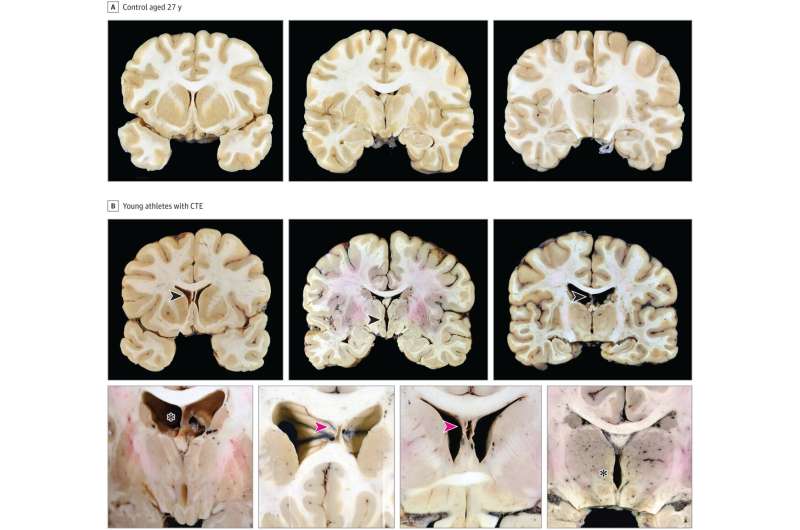This article has been reviewed according to Science X's editorial process and policies. Editors have highlighted the following attributes while ensuring the content's credibility:
fact-checked
peer-reviewed publication
proofread
Brain injury prevention in contact sports is essential, expert says

A new study recently published in JAMA Neurology provides insights into the complex and intricate relationship of contact sports and the risk of dementia.
"There is abundant evidence of a link between contact sports, such as football, and dementia later in life," says Domenico Pratico, M.D., Director of the Alzheimer's Center at Temple University (ACT).
"[It's] rather alarming that more than 40% of young athletes under 30 had developed clear features of chronic traumatic encephalopathy (CTE)," says Pratico, "and this was associated with clinical symptoms of depression, apathy and problems with decision making."
Football, ice hockey, soccer and rugby were the highest represented sports corresponding to repetitive head injury.
"CTE starts early," cautions Pratico, "and for this reason, it is extremely important to implement science-based protocols to reduce the risk of young athletes developing CTE, and to not underestimate the clinical manifestation of CTE in an individual who has sustained a traumatic brain injury."
More information: Ann C. McKee et al, Neuropathologic and Clinical Findings in Young Contact Sport Athletes Exposed to Repetitive Head Impacts, JAMA Neurology (2023). DOI: 10.1001/jamaneurol.2023.2907 jamanetwork.com/journals/jaman … /fullarticle/2808952





















